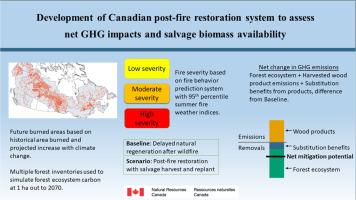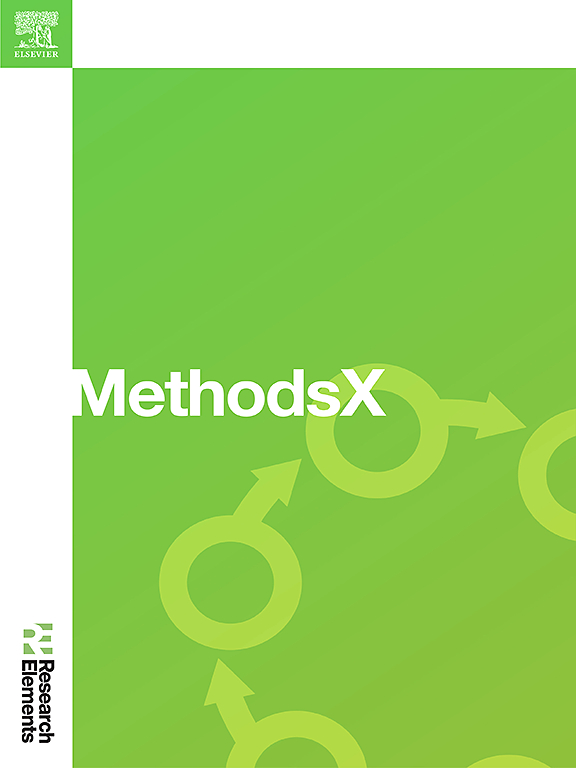开发国家火灾后恢复系统,以评估温室气体净影响和挽救生物量可用性
IF 1.6
Q2 MULTIDISCIPLINARY SCIENCES
引用次数: 0
摘要
鉴于加拿大最近发生了前所未有的野火,而且未来烧毁面积可能会增加,因此有必要探讨火灾后的抢救性采伐和恢复以及对温室气体(GHG)排放的影响。本研究提出了一个全面的建模框架,用于估算加拿大所有符合采伐条件的森林的火灾后挽救性生物量和相对于 "无 "基线的温室气体净排放量。利用通用碳预算模型 (GCBM),以 1 公顷的空间分辨率对加拿大 1990 年至 2070 年的森林生态系统碳排放和碳清除进行了建模,其中使用了若干森林资源清查数据源以及未来的采伐和野火。与前瞻性基线相比,我们评估了 2024 年至 2070 年生态系统碳排放量、伐木产品排放量和避免排放密集型材料的替代效益的变化。我们的原型系统提供了一个综合框架、配置文件、数据集链接,用于量化火灾后恢复的温室气体净排放量,并提供样本结果供验证。本文章由计算机程序翻译,如有差异,请以英文原文为准。

Development of national post-fire restoration system to assess net GHG impacts and salvage biomass availability
In light of the recent unprecedented wildfires in Canada and the potential for increasing burned areas in the future, there is a need to explore post-fire salvage harvest and restoration and the implications for greenhouse gas (GHG) emissions. Salvage logging and replanting initiatives offer a potential solution by regrowing forests more quickly while meeting societal demands for wood and bioenergy.
This study presents a comprehensive modeling framework to estimate post-fire salvage biomass and net GHG emissions relative to a ‘do-nothing’ baseline for all of Canada's harvest-eligible forests. Forest ecosystem carbon emissions and removals were modeled at 1-ha spatial resolution for Canadian forests using the Generic Carbon Budget Model (GCBM) from 1990 to 2070 using several forest inventory data sources with future harvest and wildfires.
Building upon previous research, our work integrated the Canadian Forest Fire Danger Rating System fire intensity to estimate fire severity of future wildfires. For 2024 to 2070, we assessed the changes in ecosystem carbon, emissions from harvested wood products, and substitution benefits from avoided emissions-intensive materials, relative to a forward-looking baseline. Our prototype system provides a comprehensive framework, configuration files, links to datasets to quantify the net GHG of post-fire restoration, and sample results for validation.
- •Developed spatially explicit forest carbon modeling system for all of Canada's forests.
- •Assessed the net GHG reduction from post-fire restoration.
- •Used system approach to consider forests, wood products and substitution benefits.
求助全文
通过发布文献求助,成功后即可免费获取论文全文。
去求助
来源期刊

MethodsX
Health Professions-Medical Laboratory Technology
CiteScore
3.60
自引率
5.30%
发文量
314
审稿时长
7 weeks
期刊介绍:
 求助内容:
求助内容: 应助结果提醒方式:
应助结果提醒方式:


